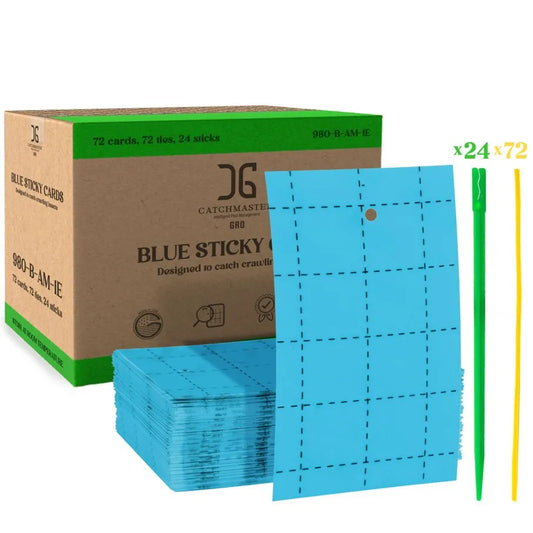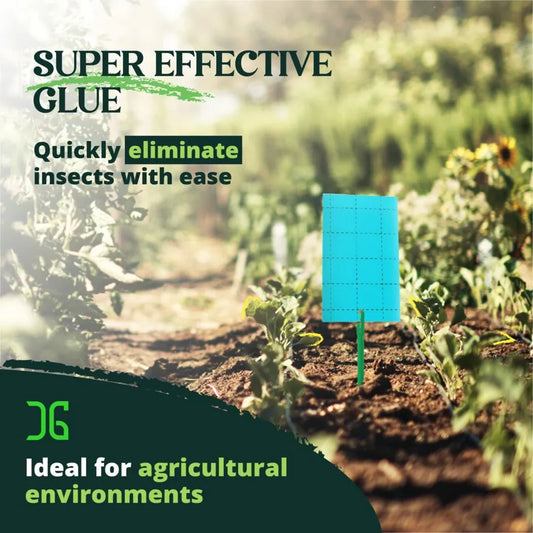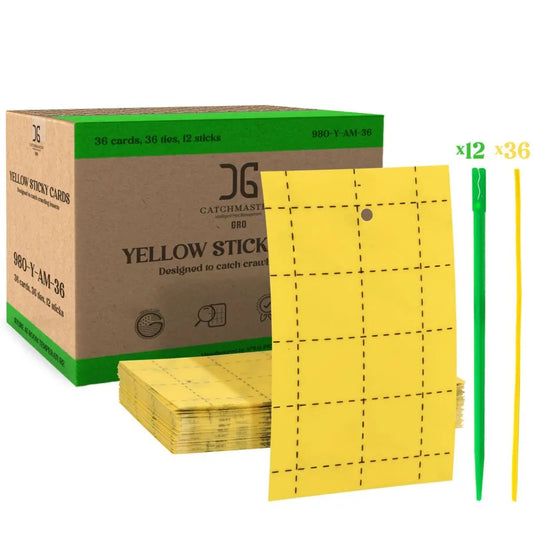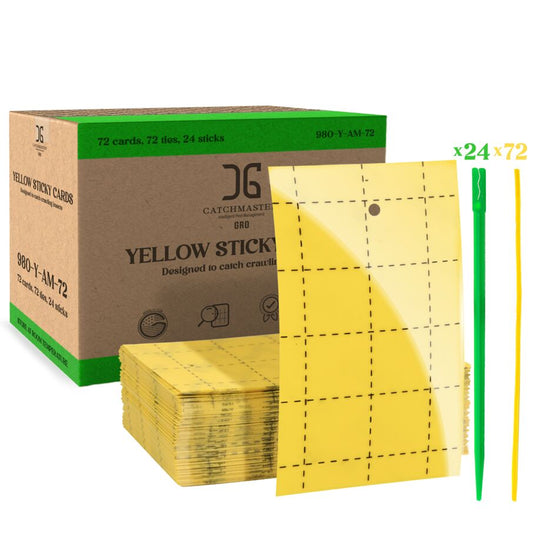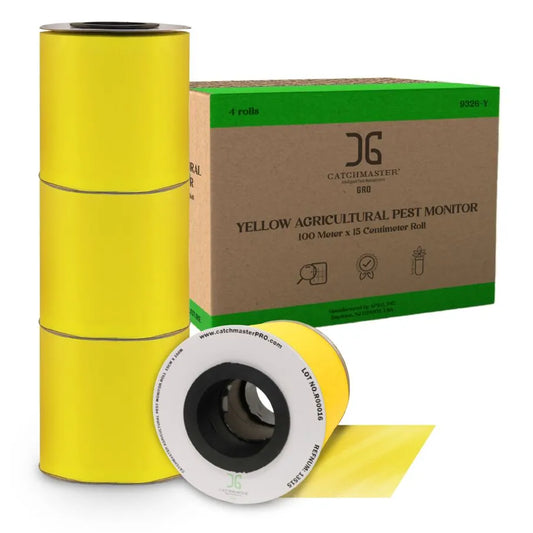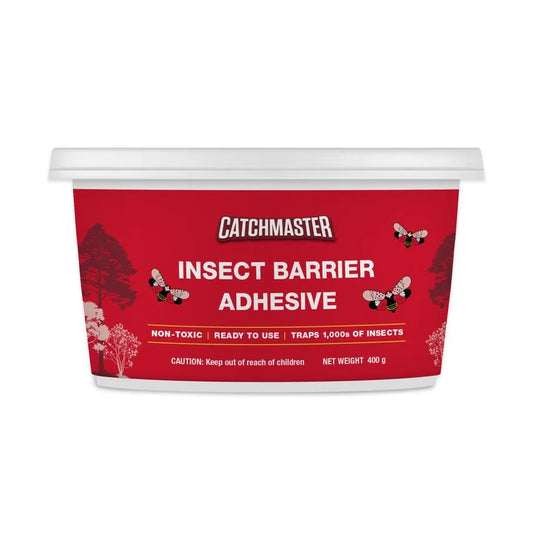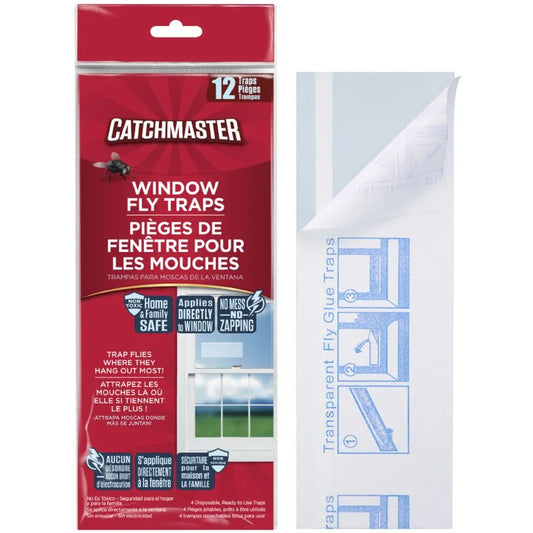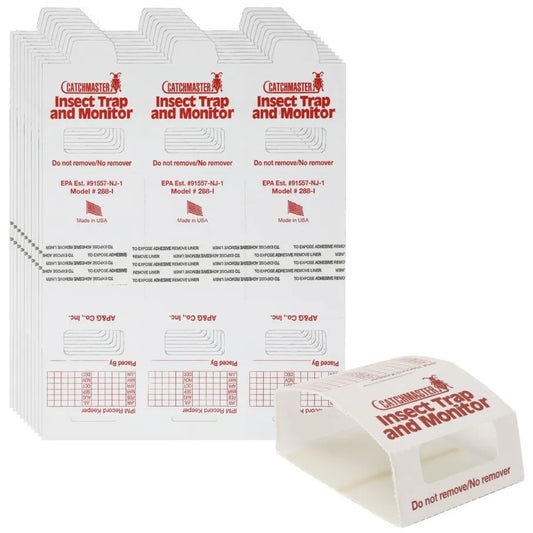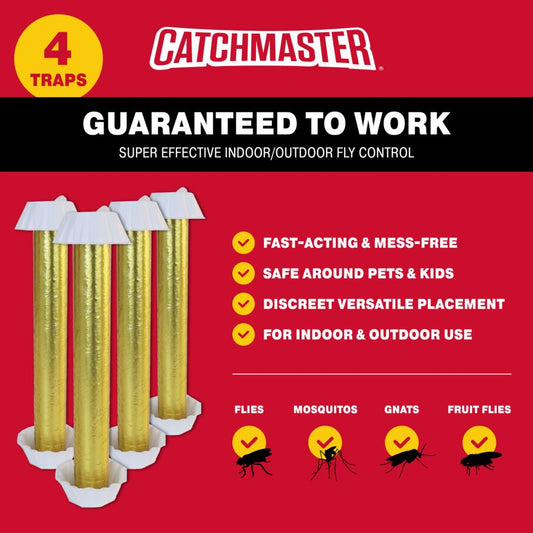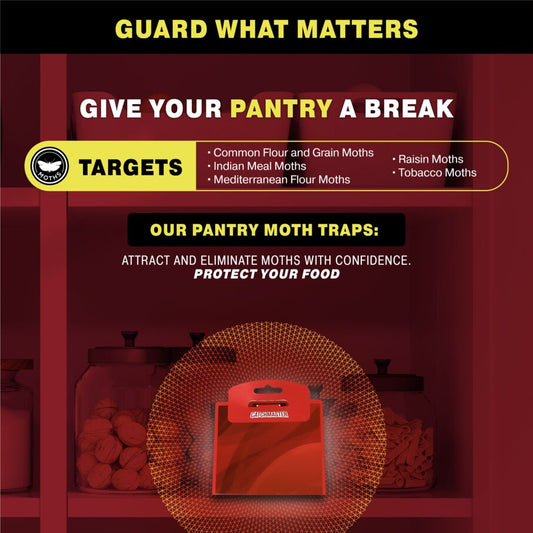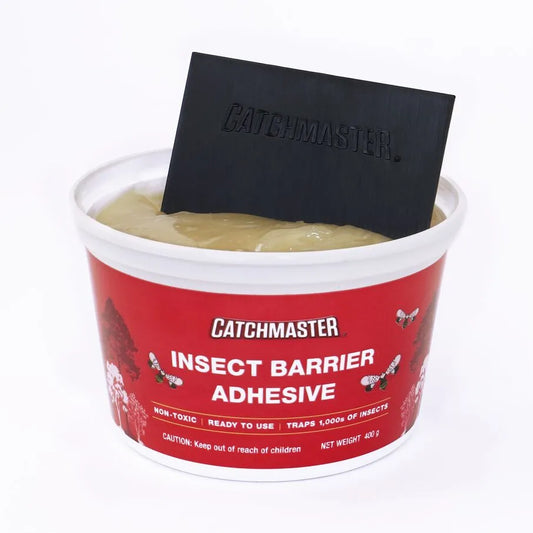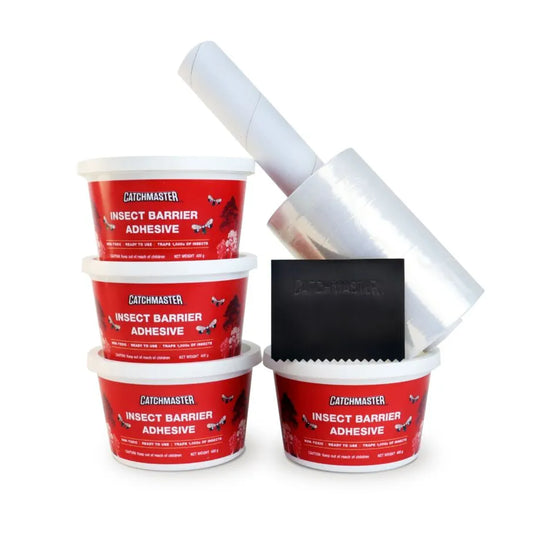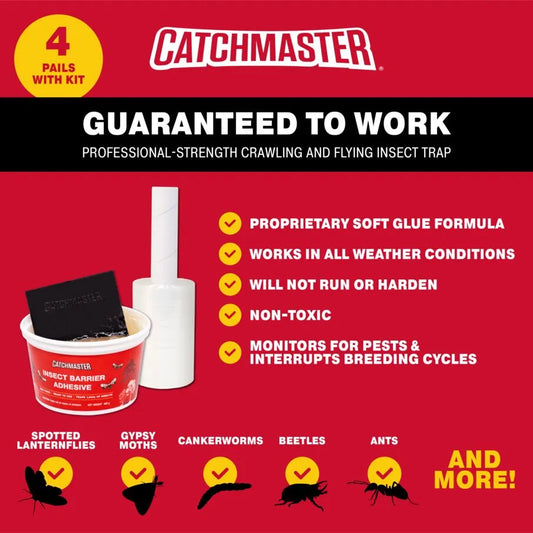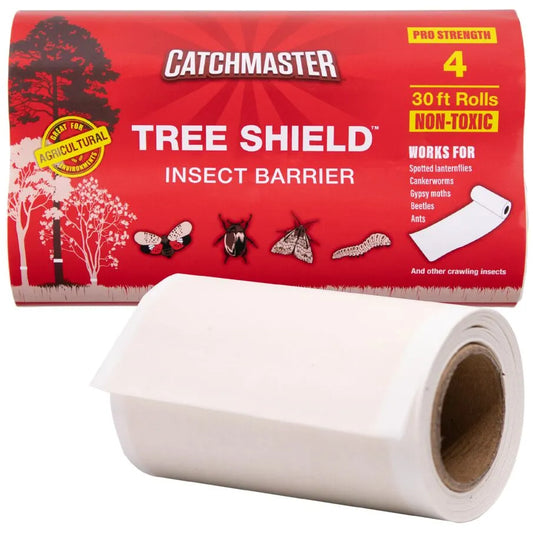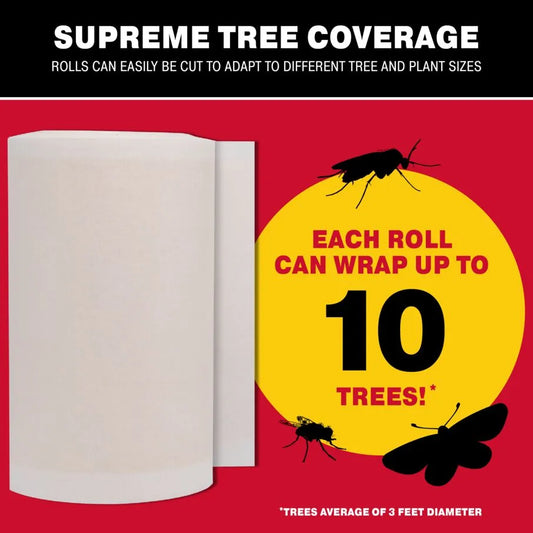Effective Pest Control with Catchmaster Sticky Traps
Safe and Non-Toxic Sticky Traps
Effective Pest Control Methods for Your Home
Effortless Pest Management
Easy Disposal Sticky Traps
Commitment to Quality and Performance
FAQs
Catchmaster sticky traps are intended for single use and should be replaced with a brand new sticky trap once they have captured pests or become dirty. We don’t recommend reusing traps as this can compromise their effectiveness. The adhesive may lose its strength over time. When you use fresh traps, you ensure that your pest control efforts remain effective and that you can quickly respond to any new pest activity.
Catchmaster sticky traps are designed with safety in mind, featuring a non-toxic adhesive that poses no chemical threat to pets and children. We do always recommend that you place traps in areas that are less accessible to curious pets and young children, such as behind furniture or in corners. Regularly monitoring the trap placement to maximize effectiveness and safety.
While primarily created for use indoors, Catchmaster sticky traps can also be utilised in covered outdoor areas. We advise customers to protect them from weather conditions, such as rain or direct sunlight, which can impact the adhesive's effectiveness to trap pests. If you do use these outdoors, make sure you place traps in shielded areas, such as under eaves or in garages, to extend the reach of your pest control efforts.
While Catchmaster sticky traps do not have a specific expiration date, their effectiveness can diminish over time if they are exposed to dust, moisture, or extreme temperatures. We recommend customers to store unused traps in a cool, dry place away from direct sunlight to preserve their adhesive properties. Proper storage ensures that your traps are ready for use whenever needed.
Catchmaster sticky traps are effective against a wide range of pests, including flies, spiders, crickets, and other crawling insects as well as larger rodents like mice and rats.. Our traps are designed to exploit the natural movement patterns of these pests, capturing them as they travel along walls or in search of food. This versatility makes Catchmaster sticky traps an essential component of any integrated pest management strategy.
The traps can be placed in areas where pests are most active, such as along walls, in corners, or near entry points. Once a pest steps onto the trap, it becomes stuck, allowing for easy removal and disposal. Catchmaster sticky traps utilize a specially formulated adhesive that effectively immobilizes pests upon contact. This humane method offers a straightforward solution to pest infestations without the need for harsh chemicals.
To dispose of used Catchmaster sticky traps, place them in a sealed plastic bag to contain any pests and prevent any odors. We always recommend cusomers the bag directy in an outdoor trash bin. This ensures that pests are securely contained and reduces the risk of attracting other pests to your home. Handle used traps with care, using gloves if necessary, to avoid direct contact with captured pests or the adhesive.
We recommended monitoring our Catchmaster sticky traps regularly, at least once a week, to ensure they remain effective. Replace traps that have captured pests or accumulated dust and debris and replace them with fresh clean sticky traps. Regular maintenance ensures that the traps continue to function optimally and provides an opportunity to assess the level of pest activity in your home.
While Catchmaster glue traps do not have a specific expiration date, their effectiveness can diminish if exposed to dust, moisture, or extreme temperatures over time. To preserve their adhesive properties, store unused traps in a cool, dry place away from direct sunlight. Proper storage ensures that your traps are ready for use whenever needed.
If a pet becomes stuck on a Catchmaster sticky trap, we recommend gently applying a small amount of cooking oil, such as olive or vegetable oil, to the areas they are attached to the board. This will help loosen the adhesive, allowing you to carefully remove the trap from your pet's fur or skin. Once removed, wash the area with soap and water to remove any remaining residue. It's important to keep traps out of reach of pets and to monitor trap placement regularly.
Seal cracks and openings around the outside of your home using caulk or weather stripping to block potential entry points for pests. Store food in airtight containers and promptly clean up spills and crumbs to make sure you’re not attracting pets into the house in search of food. Regularly inspect your home for signs of pest activity and use Catchmaster sticky traps as part of an integrated pest management approach.
Yes, Catchmaster sticky traps are often used alongside other pest control products to enhance your pest control measures. Combining the usage of sticky traps to trap existing pests, and then sealing entry points and removing food sources, to prevent future pests is one of the most comprehensive approaches to pest management.
Catchmaster sticky traps are designed with environmental safety in mind. They utilize a non-toxic adhesive that does not release harmful chemicals into the environment, making them safe for use in homes with children and pets. Additionally, the materials used in the traps are selected to minimize environmental impact, ensuring that you can manage pest problems responsibly while contributing to a healthier planet.
To maximize the effectiveness of Catchmaster sticky traps, place them in areas where pest activity is highest. Common locations include along baseboards, in corners, and near entry points such as doors and windows. It's important to position the traps in areas where pests are likely to travel, as this increases the likelihood of capture. Regularly check and adjust the placement of the traps based on observed pest activity to ensure optimal results.
There are a number of signs of a pest infestation including finding droppings and damage to fabrics or food packaging. You may also notice an increase in pest-related noises or odors. If you observe any of these signs, it may be time to implement a pest control strategy using Catchmaster sticky traps.
- Choosing a selection results in a full page refresh.
- Opens in a new window.


